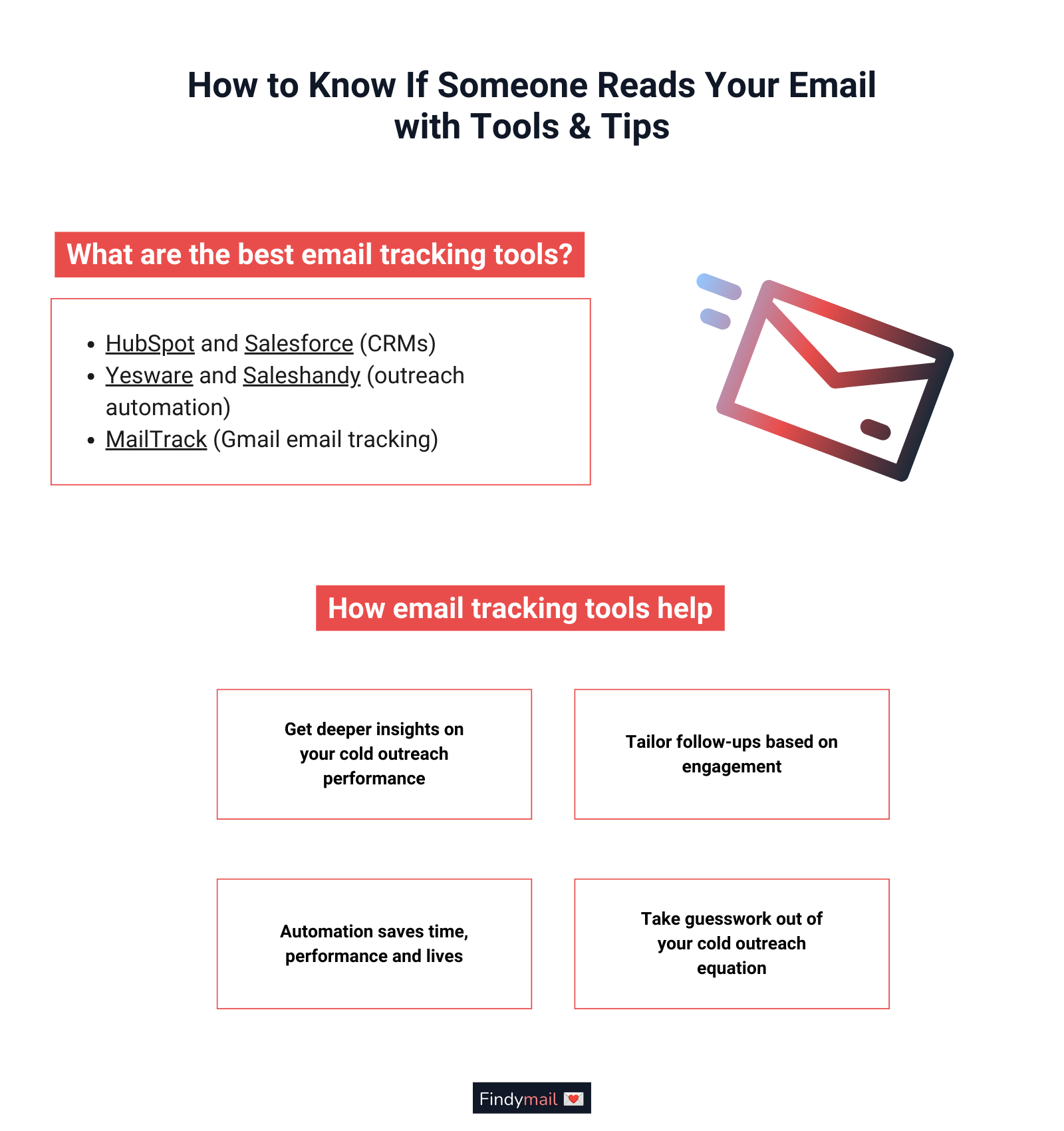How do you know if someone has read your emails? Well, you could just wait for a reply to your email; then you know they’ve read it, right? But I think you’ll agree that this method is hardly reliable.
Fortunately, other methods can reliably show you if someone has read your email. You can have your pick of the litter, from basic techniques to advanced tools.
Let’s walk through the main ways to know if someone has read your email!
Basic Methods: Request a Read Receipt
The basic method has been available for almost as long as we’ve been able to read emails. Many email providers allow you to request a read receipt, which is often quite simple.
For example, in Outlook, you only need to check a box to get either a read receipt or a notification that your email was delivered:
- Go to the File menu
- Select Options -> Mail
- Navigate to the “Tracking” section
- Select the “Read receipt”
In Gmail, on the other hand, you’ll need to go into your user settings and activate the relevant option to ensure that you get read receipts for your emails:
- Start writing a new email
- Click “More options” on the bottom right
- Select “Request read receipt”
Once activated, you can request read receipts for the emails you send. Remember, though, that this feature is unavailable in your free Gmail account, and you’ll need to upgrade to a paid version.
The Problem with Using Read Receipts to Know if Someone Reads Your Email
Despite its ease of use, there are some drawbacks to using read receipts to see if people read your emails. For example, when you request a read receipt, recipients will need to confirm if they’ve received your email.
Now, they can choose whether they want you to know if they’ve read your email. Tough cookie when it comes to cold outreach, huh?
Additionally, many email platforms allow users to opt out of sending read receipts. In this instance, you’ll never see if someone has opened your email.
Advanced Method: Email Tracking Tools
Since read receipts aren’t the most effective method for knowing who opened your email, especially when sending sales emails, you’ll need the right tools.
Enter: email tracking tools. They show you:
- If someone reads your email
- When they read it
- If they clicked on any links
- How many times they opened your email
To do this, they embed an invisible image into your email, loaded when the recipient reads it. With this data, you’ll ensure that you send the right emails to the right people at the right time.
Mailtrack is the best option if you don’t need to analyze email opens at scale
Some of the most popular email tracking tools on the market include:
- HubSpot and Salesforce (CRMs)
- Yesware and Saleshandy (outreach automation)
- MailTrack (Gmail email tracking)
If you already automate your cold outreach, your tool will likely have an integrated email tracking feature. It’s crucial for understanding your email deliverability and success, so make sure you’ve ticked on the right setting, and you’ll be good to go!

Why Should You Use Email Tracking Tools?
While these tools offer different pricing plans, features, and value, they all give you the same benefits:
Get Deeper Insights
With an email tracking tool, you’ll get in-depth insights into your campaigns’ performance. For example, you can send two different emails to your list at different times (A/B test).
Based on the data you get back, you’ll see which email performs best and gets opened more often. From this, you’ll learn what content resonates most with your audience and when you should send your emails for the best results.

Knowing if Someone Reads Your Email Encourages Conversation
Once you know your prospects have opened your emails and engaged with them, you can send follow-up emails. These emails will reach them when your business is top of mind, which means they’ll be more likely to engage with your campaign.
Ultimately, this should give your cold email conversion rate a nice boost!
Email Tracking Provides More Context
Because email tracking tools show how prospects interact with your emails, you’ll know which parts of your copy or offer they’re most interested in.
Based on that, you can customize your future campaigns, pose the right questions to buyers, and lead more productive conversations.
Automation Saves Lives
Another significant advantage of email tracking tools is their ability to help you create automated workflows. You’ll typically create a workflow based on triggers.
So, for example, if a prospect opens your email, a follow-up email will be sent automatically. This helps you send the right emails at the right time without jotting the tasks down in your to-do list.

It Saves Time and Money
Email tracking shows if your first email was interesting enough to be opened. Was it? Great! It’s time to follow up.
But if a lead hasn’t in any way interacted with your first or second email, you might want to remove them from your mailing or lead gen list to save time and money, and prevent your sender reputation from getting wrecked.
Get Started With Email Tracking Tools Now
Understanding if someone reads your email will give you the answer you need: am I using the right bait to reel in this fish?
If your emails aren’t being opened, it may be time to work on your subject lines. You might also want to double-check that your contact database information is correct.
But when you know exactly who’s opening your emails (and how they’re interacting with them), you’ll be able to focus on the most important conversations.
Your email conversion rate will thank you!







